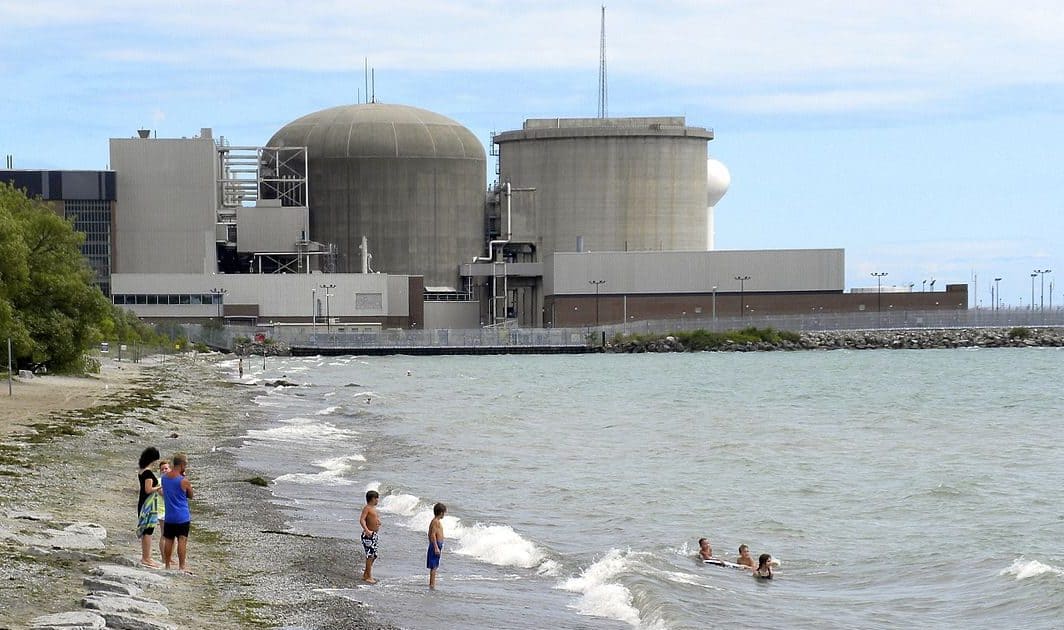Still hope for return to service of Pickering ‘A,’ says nuclear insider
Published October 2, 2024 at 3:48 pm

The end of the line for the world’s first large-scale CANDU nuclear reactor has industry insiders remembering its long run of safe operation, with one prominent supporter not yet convinced the unit’s days supplying power to Ontarians are over.
Pickering ‘A’ Unit 1 was shut down Tuesday as planned after more than 53 years of operation, with the unit’s last run a continuous 618 days of safe performance. Not bad, said Canadians for Nuclear Energy President and co-founder Chris Keefer, for a nuclear unit connected to grid on April 5, 1971.
“The late life performance of Pickering Unit 1 is extraordinary and a testament to Canadian engineering and technical expertise, Keefer said. “She put out reliable 24/7/365 power right to the end.”
Pickering Nuclear was the home of many firsts in a “blossoming” nuclear industry and provided a viable alternative in the 1960s for countries like Canada who had little interest in nuclear power for the weapons business, added Christopher Adlam, the other co-founder of Canadians for Nuclear Industry.
“The high-capacity factors and online refuelling that the CANDU offered early on positioned it well among its peers,” he said. “While we say goodbye to the oldest operating CANDU, it is bittersweet, as the future of its newer sister units at the B side is bright, with refurbishment in the future.”

Keefer, a Toronto emergency room doctor when he’s not extolling the merits of nuclear power in the media or on his podcasts, said Pickering was built instead of another coal plant to power the Ontario auto industry and played a “key role” in the final phase out of coal in the province.
The CANDU design also provided the basis for the highly successful CANDU-6 reactor design exported around the world, including Romania where a CANDU-6 unit was the top performing reactor in the world between 2011-2021 with an average capacity factor of 94 per cent.
He is also not yet sold on the idea that the lifespan of Pickering ‘A’ is over.
“I think we have yet to see the end of Pickering A,” he said. “While refurbishing the Pickering A reactors would be more challenging than the four Pickering B reactors … it is not outside the realm of possibility that Unit 1 could be refurbished at some point in the future.”

Dr. Chris Keefer, co-founder of Canadians for Nuclear Energy
The on-budget and on-time refurbishments at Bruce and Darlington combined with the ever-increasing appetite for 24/7 zero carbon baseload power from organizations “willing to pay top dollar” might just mean that Pickering Unit 1 is not done, he added.
“Just look at Three Mile Island Unit 1 (not the melted down Unit 2) that is being restarted due to a lucrative power purchase agreement between Microsoft and the nuclear plant owner Constellation that was signed just last month.”
The Province agreed in January to refurbish the four ‘B’ reactors at Pickering, which were built in the 1980s. The project is expected to be complete by the mid-2030s and should extend the life of the nuclear plant for another 30 years.
Units 1 and 4, along with the four ‘B’ reactors, produced about 16 per cent of Ontario’s power and employed 3,000 workers.
“When one chapter closes, another begins,” OPG declared on social media, “as we focus on helping power Ontario for generations to come.”
Pickering Unit 4’s future is less clear – the unit marked two years of continuous service in August and was taken offline for a planned three-month maintenance outage – but it appears unlikely Unit 1 will power up again.
If that is indeed the case, noted Keefer, “what a run she has had.”






